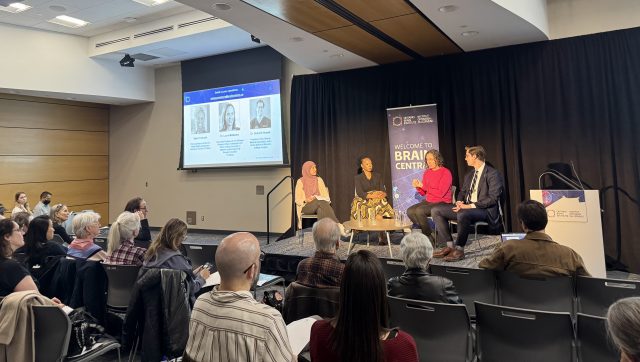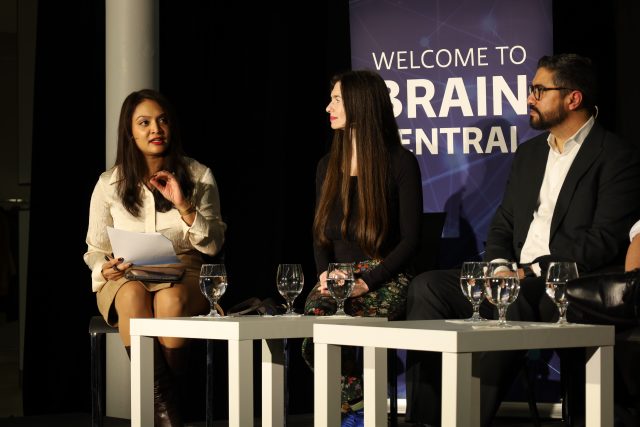Image Courtesy of Providence Care
A unique approach brings movement to stroke survivors
BOTOX® and robots: a curious pair.
But it’s this novel combination of medicine and technology that’s helping doctors and scientists find better treatments for stroke patients with limited movement.
More than 50,000 people in Canada suffer a stroke every year. Of them, more than one third develop a condition called spasticity.
“Spasticity is when the muscles become unusually tight and have trouble relaxing,” says Dr. George Mochizuki, a Scientist at the Heart and Stroke Foundation Centre for Stroke Recovery at the Sunnybrook Research Institute. “It’s a condition that can severely limit movement and flexibility. For example, someone with spasticity might have trouble straightening their arm at the elbow, making it difficult to reach out for a cup of coffee.”
For many years, treatment options for patients with spasticity included general anti-spastic medication and physical therapies to slowly stretch the muscles, allowing for a greater range of movement. Recently, however, Dr. Mochizuki has taken aim at combination therapies that can help kick start the road to recovery.
The injectable protein botulinum toxin type A has been in therapeutic use for more than three decades, treating everything from crossed eyes to excessive sweating. Today, it is most commonly known for its cosmetic use under the trade name BOTOX®. BOTOX® works by stopping the release of a chemical signal from the nerves that causes the muscle to contract.
“The mechanism that makes BOTOX® effective for cosmetic use can help us treat stroke patients with spasticity,” says Dr. Mochizuki. “Our hope is that the combination of BOTOX® with specific types of rehabilitation will allow stroke survivors to regain muscle function and improve recovery – both key ingredients to performing everyday activities.”
But how will doctors know if the BOTOX® is really working?
Cue the robots.
Working alongside Mochizuki is Dr. Stephen Scott, a Professor of Biomedical and Molecular Sciences at Queen’s University, and the Founder and Chief Scientific Officer of BKIN Technologies Ltd. – a start-up technology firm and maker of the KINARM™.
The KINARM™ consists of two robots that attach to the arms of a patient. These robots are designed to very accurately track movement. A patient sits comfortably in the KINARM™ and is instructed to perform a set of standard behavioural tasks. Information recorded by the KINARM™ is then compared to how a healthy individual performs the same tasks. The result is a broad-based assessment of a patient’s sensory, motor and cognitive function.
“The tasks are quite varied,” says Dr. Scott. “Sometimes we provide visual cues that guide the patient to move in certain ways. That helps us look at their visual-motor skills. Other times we ask them to hit certain objects moving in the workspace and avoid others. That tests rapid arm movement, attention and spatial awareness. So far we have about five basic behavioural tasks that assess a range of brain processes and we’re developing several new tasks. Our ultimate goal is to create a comprehensive test for the brain – similar to a blood test for the body.”
BKIN Technologies Ltd. made the KINARM™ commercially available worldwide more than eight years ago. Since then, the platform has been used to measure everything from the effect of traumatic brain injury to Fetal Alcohol Syndrome.
In the case of Mochizuki and Scott’s project, the KINARM™ is being used to test how well BOTOX® works to reduce spasticity in stroke patients, and whether the treatment allows for a more effective recovery when used in combination with more traditional therapies, such as physical activity.
“Because previous measures have relied on what doctors can observe with their own eyes, we’ve had trouble truly understanding the effectiveness of treatment,” says Dr. Scott. “Our eyes are less sensitive and objective than the KINARM™. The KINARM™ is better able to monitor how well a particular therapy works for a patient so we can ensure they’re getting the best, most effective care for their situation.”
To learn more about the KINARM™, visit the BKIN Technologies Ltd. website.
This project was made possible in partnership with the Ontario Brain Institute and the Federal Economic Development Agency for Southern Ontario (FedDev Ontario), through the Technology Development Program. Allergan Canada Inc. (maker of BOTOX®) and BKIN Technologies Ltd. provided substantial in-kind and cash funding to enable this support.
The Ontario Brain Institute and FedDev Ontario are bringing together researchers and industry as part of a new neuroscience cluster. The cluster involves organizations from across southern Ontario, which are sharing their local infrastructure, expertise and knowledge to enable better use of research resources and accelerate discovery. As a result of this FedDev Ontario funding, BKIN Technologies Ltd. has commercialized the KINARM™ for clinical researchers and is planning to substantially grow its workforce in Kingston, Ontario.
Back to Brainnovations newsletter



